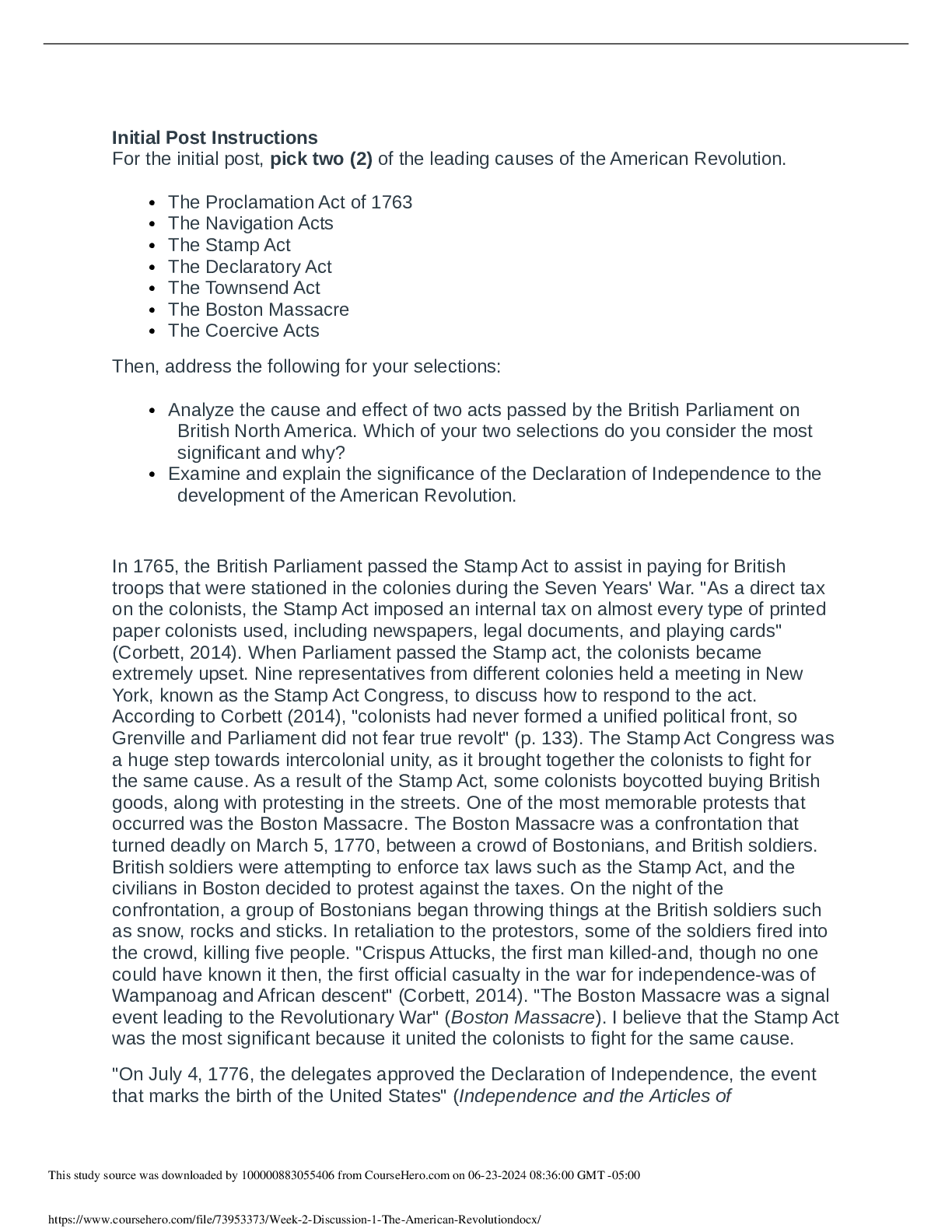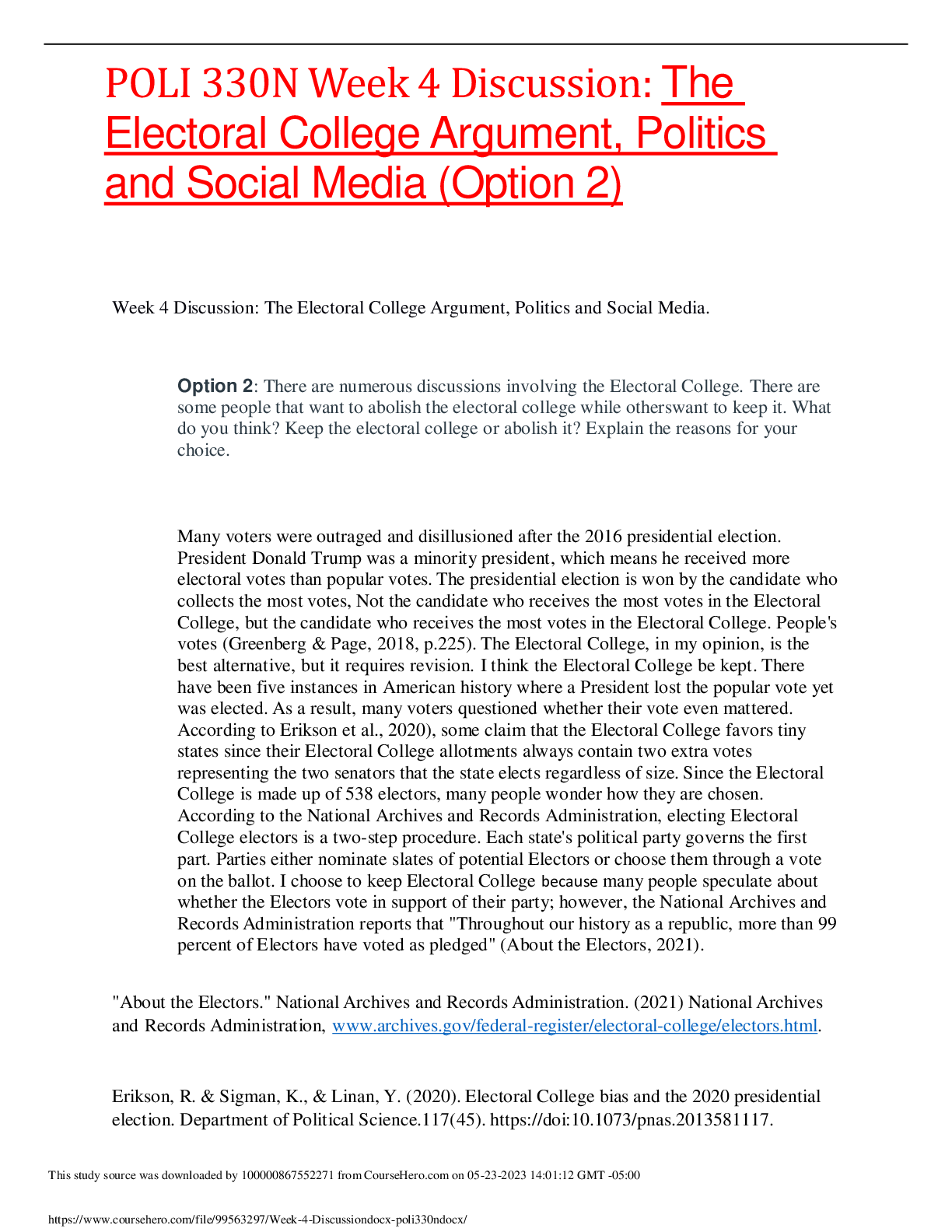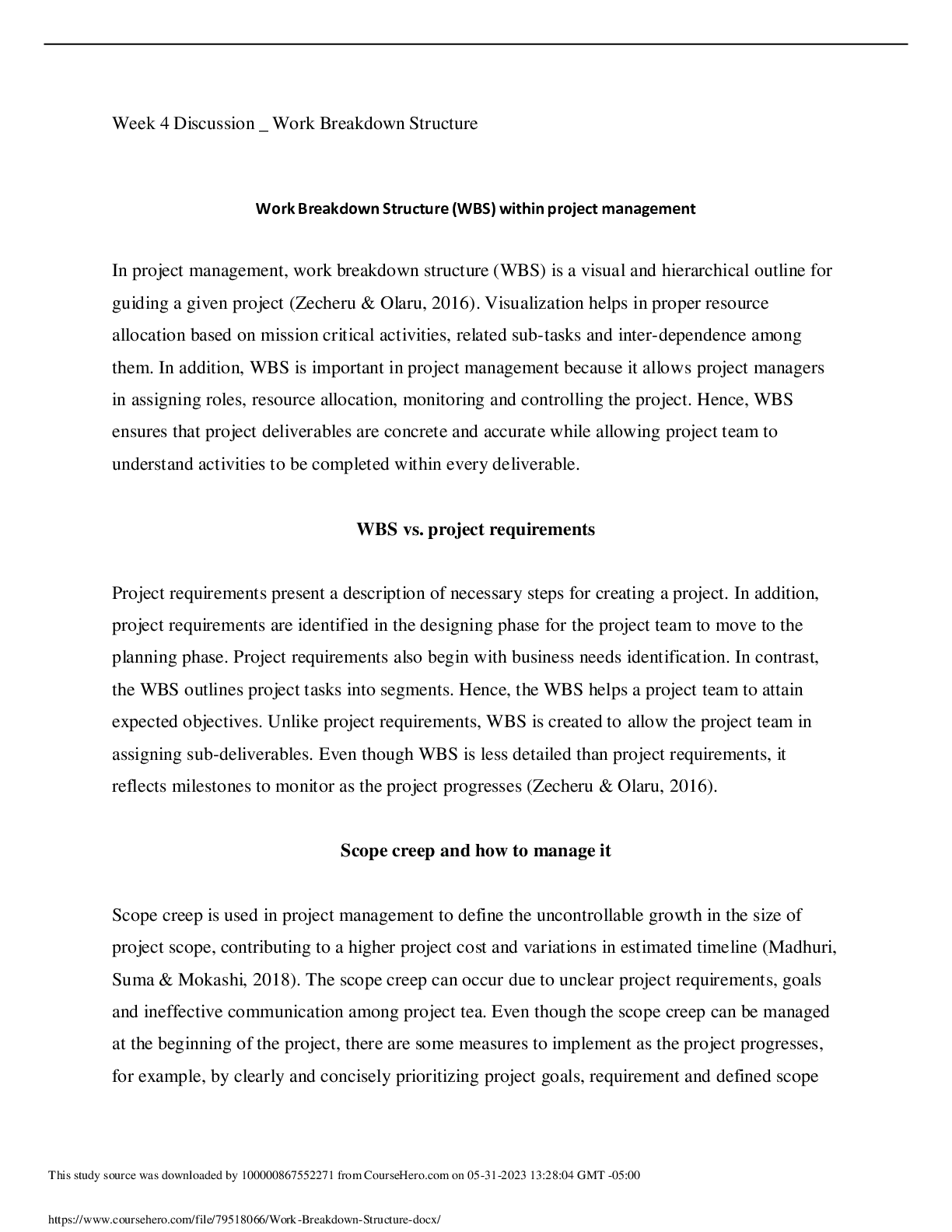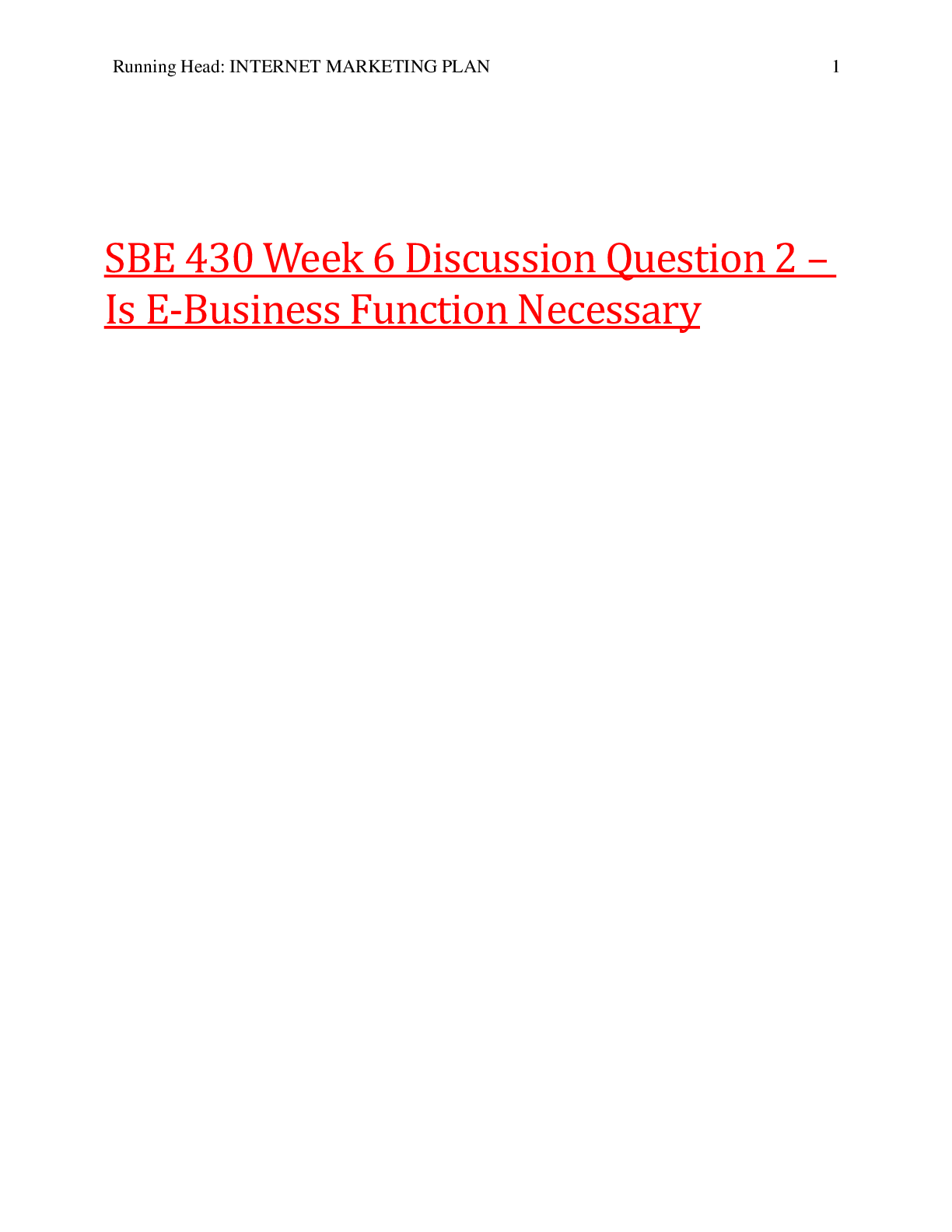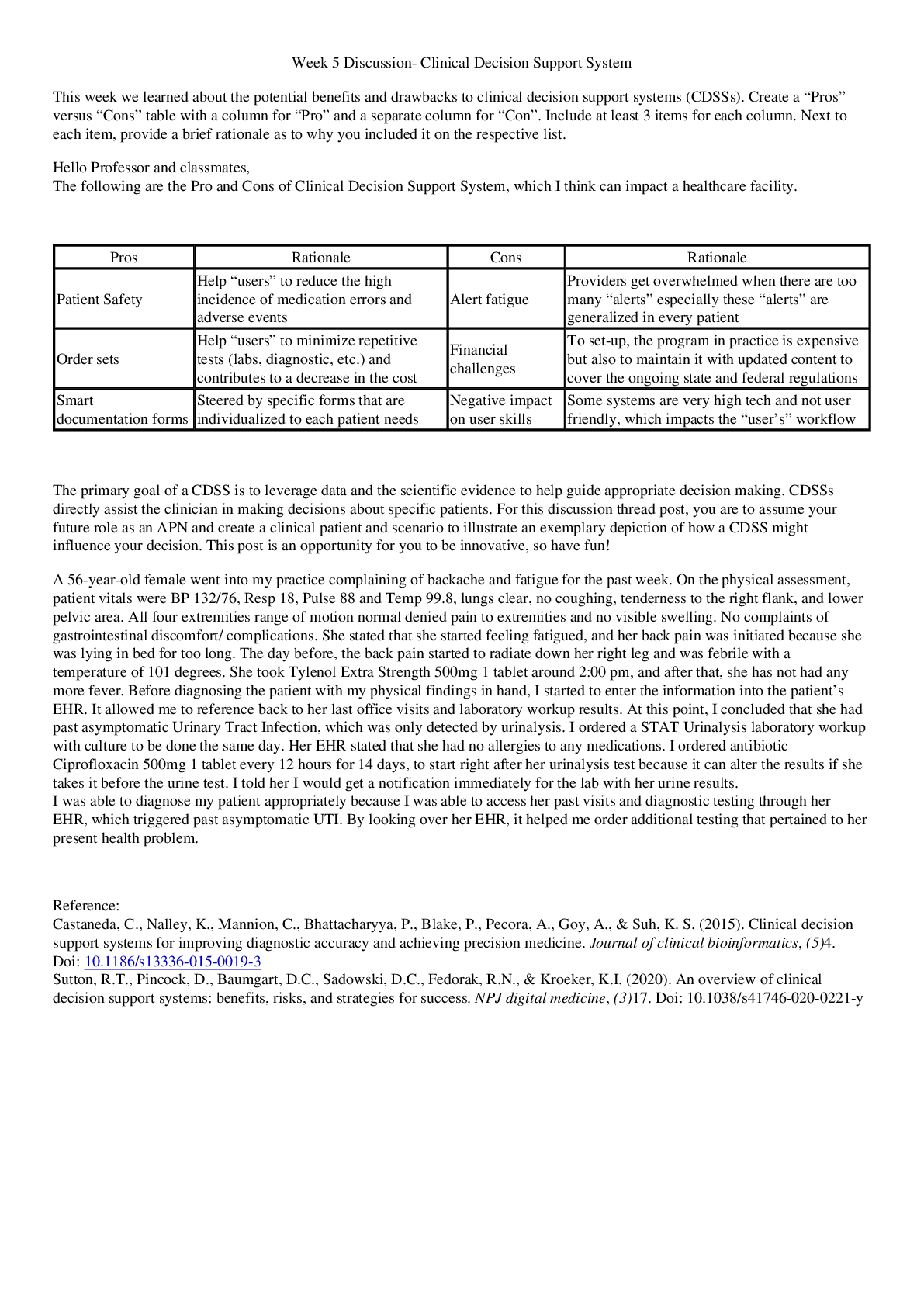Accounting > DISCUSSION POST > ACCT 212 Week 5 Discussion: Inventory Management (All)
ACCT 212 Week 5 Discussion: Inventory Management
Document Content and Description Below
ACCT 212 Week 5 Discussion: Inventory Management Discuss with examples the two methods of inventory control. Which method do you think is better for a retail store with several items of small value? ... Inventory accounting consist of two main systems: periodic, and perpetual. Periodic means that items are accounted for by hand, then priced at different intervals. I believe this method would be better for a retail store with several items of small value. This is because the store can count and price inventory periodically to determine inventory quantities, and keep a record of inventory purchased, rather than a continuing record of each small value item it sells. The Cost of Goods Sold is then calculated by using the formula: Beginning Inventory + Purchases − Ending Inventory = Cost of Goods Sold. A perpetual inventory system uses computer software and barcodes to keep a running record of inventory on hand, purchased, and sold. When a business purchases inventory, employees run items through a scanner which reads the barcode on them and adds them to the inventory account as well as to accounts payable. When items of inventory are sold, they are scanned again. The company’s computer system records the sale, the cost of goods sold, and updates the inventory, removing the item from the company’s records, all in one step. (Thomas, Tietz, & Jr, 2018, p. 310). Reference Thomas, C. W., Tietz, W. M., Jr, W.T. H. Financial Accounting. (2018). Explain to your classmates what the FIFO inventory method is and how it affects Cost of goods sold and inventory valuation? Each inventory method can have a different impact on reported profits, income taxes, and cash flow. Therefore, companies select their inventory method very carefully. To compute the cost of goods sold and the cost of ending inventory still on hand, an organization must assign a unit cost to the items. To do so, a business can use the first-in, first-out (FIFO) inventory method. Under the FIFO (first-in, first-out) method, the first costs into inventory are the first costs assigned to the cost of goods sold. When inventory costs are increasing, first-in, first-out (FIFO) cost of goods sold (COGS) is lowest because it’s based on the oldest cost. Therefore, gross profits would be the highest. Also, FIFO ending inventory (EI) would be highest because it’s based on the most recent costs, which are high. On the contrary, when inventory costs are decreasing, FIFO COGS is highest because the oldest costs are high, and FIFO EI is lowest because the most recent costs are low. (Thomas, Tietz, & Jr, 2018, p. 314). Reference Thomas, C. W., Tietz, W. M., Jr, W.T. H. Financial Accounting. (2018 What are the three-inventory cost-flow assumptions allowed by GAAP? Cost accounting is the process of collecting, analyzing, summarizing, and evaluating different courses of action involving costs, then advising management based on cost efficiency and capability. The cost of items remaining in inventory and the cost of goods sold are easy to determine if purchase prices and other inventory costs never change, but price fluctuations may force a company to make certain assumptions about which items have sold and which items remain in inventory. There are three common methods for inventory accountability: weighted-average cost method; first in, first out (FIFO), and last in, first out (LIFO). Companies in the United States operate under the generally accepted accounting principles (GAAP) which allows for all three methods to be used. FIFO, LIFO, average are assumptions because the flow of costs out of inventory does not have to match the way the items were physically removed from inventory. (Braggs, 2019). Reference Bragg, S. (2019). Inventory cost flow assumption. Retrieved from https://www.accountingtools.com/articles/what-is-the-inventory-cost-flow-assumption.html [Show More]
Last updated: 1 year ago
Preview 1 out of 2 pages
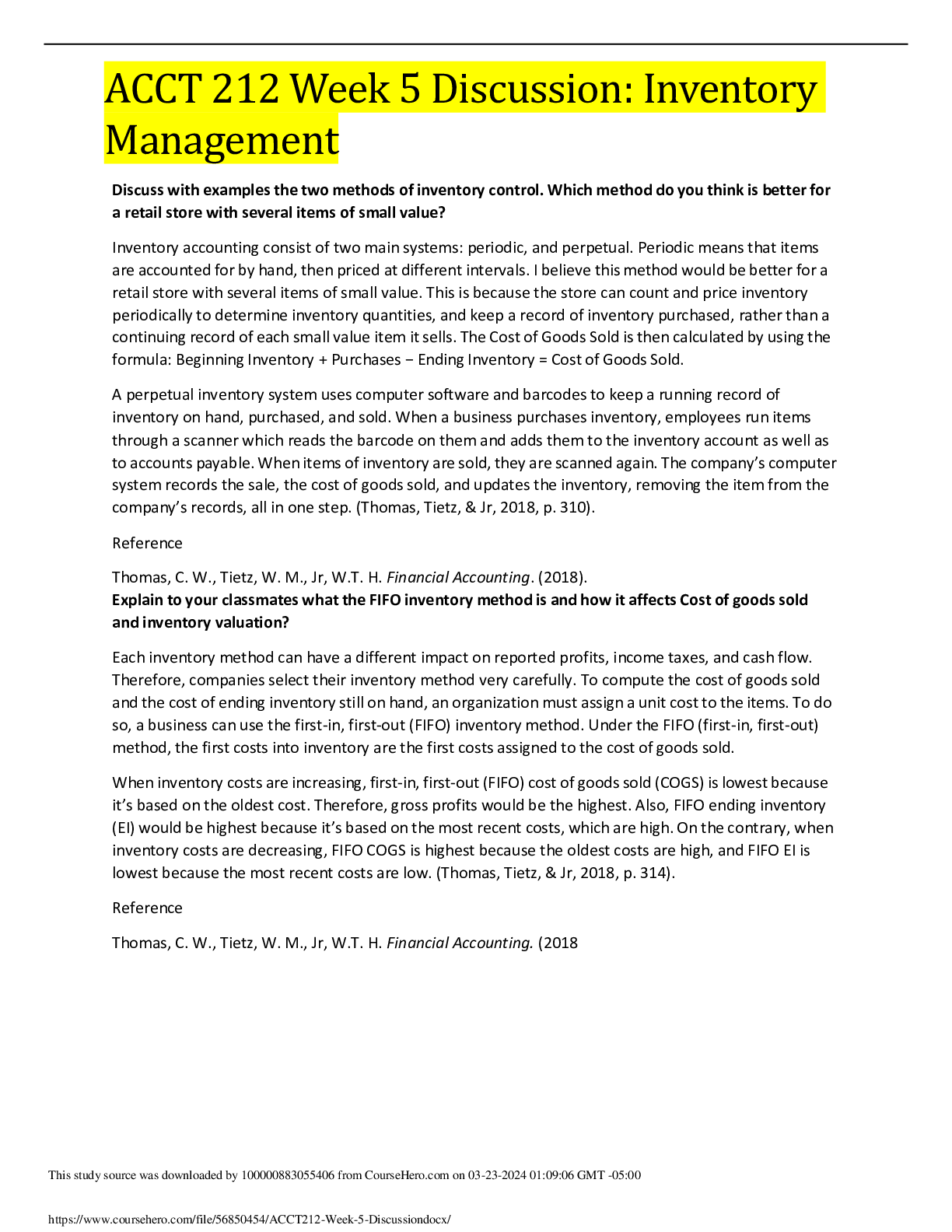
Buy this document to get the full access instantly
Instant Download Access after purchase
Buy NowInstant download
We Accept:

Reviews( 0 )
$10.00
Can't find what you want? Try our AI powered Search
Document information
Connected school, study & course
About the document
Uploaded On
Mar 23, 2024
Number of pages
2
Written in
Additional information
This document has been written for:
Uploaded
Mar 23, 2024
Downloads
0
Views
51

